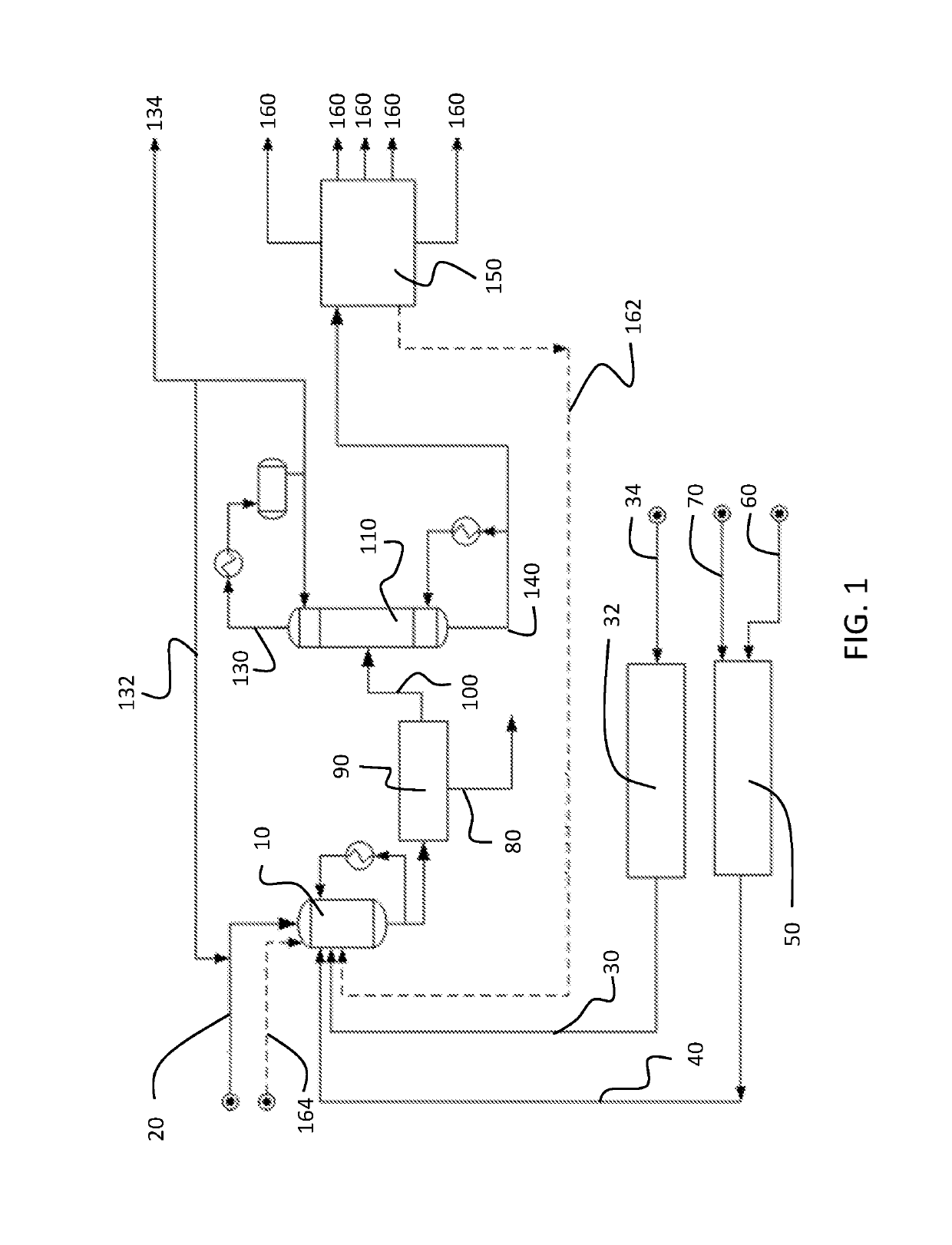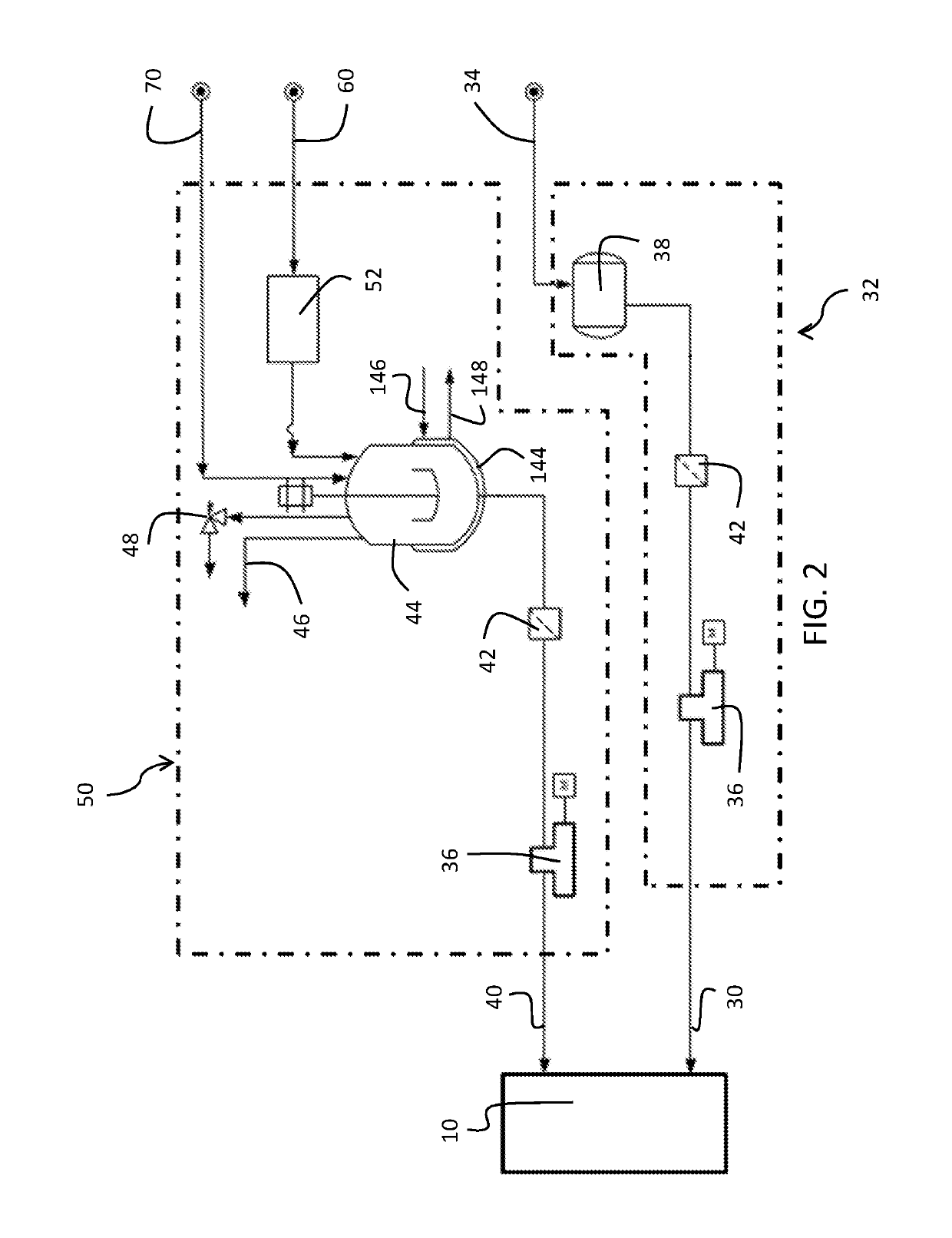Process for selective ethylene oligomerization with antifouling components
a selective ethylene and oligomerization technology, applied in the direction of organic-compound/hydride/coordination complex catalyst, physical/chemical process catalyst, bulk chemical production, etc., can solve the problems of polyethylene-based residue formation, process undesirable, and increasing process shutdown
- Summary
- Abstract
- Description
- Claims
- Application Information
AI Technical Summary
Benefits of technology
Problems solved by technology
Method used
Image
Examples
examples
[0059]The various embodiments of antifouling catalyst systems and the performance of the antifouling compound injection system will be further clarified by the following examples. The examples are illustrative in nature, and should not be understood to limit the subject matter of the present disclosure.
[0060]To evaluate the antifouling effects of the antifouling catalyst systems and processes described, ethylene dimerization reactions were carried out and evaluated. Multiple sample antifouling catalyst systems were formulated and tested in accordance with the processes of this disclosure. The process for selective ethylene dimerization with antifouling components and the associated antifouling compound injection system were compared to baseline comparative systems. Specifically, with the antifouling compound injection system, the co-catalyst and the antifouling agent were premixed in the antifouling compound mixing vessel before injection into the process reactor as a separate strea...
PUM
| Property | Measurement | Unit |
|---|---|---|
| temperature | aaaaa | aaaaa |
| pressure | aaaaa | aaaaa |
| temperature | aaaaa | aaaaa |
Abstract
Description
Claims
Application Information
 Login to View More
Login to View More - R&D
- Intellectual Property
- Life Sciences
- Materials
- Tech Scout
- Unparalleled Data Quality
- Higher Quality Content
- 60% Fewer Hallucinations
Browse by: Latest US Patents, China's latest patents, Technical Efficacy Thesaurus, Application Domain, Technology Topic, Popular Technical Reports.
© 2025 PatSnap. All rights reserved.Legal|Privacy policy|Modern Slavery Act Transparency Statement|Sitemap|About US| Contact US: help@patsnap.com



